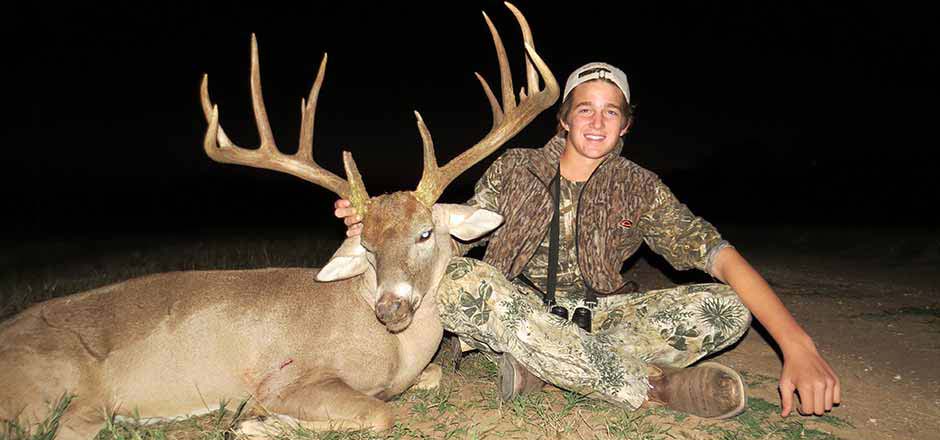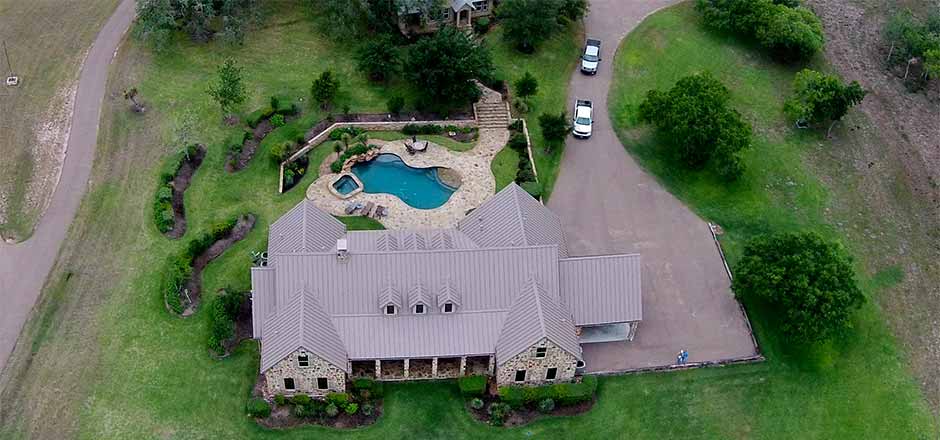About Us
This History of the Ranch
The 3,600 acre JAG Ranch is located in eastern Dimmit County, Texas adjacent to FM 1019 between Big Wells and Valley Wells, in the heart of the “Golden Triangle.” It is situated approximately twenty (20) miles west of Cotulla, Texas and next door to the famous Las Vegas Ranch. Approximately, one and one-half miles of the Nueces River form the southwestern boundary of the ranch. The ranch is completely high-fenced. The ranch has ten earthen tanks in addition to numerous drainages that drain into the Nueces River.
JAG Ranch was formerly known as the Strait Ranch. It was purchased by the late wealthy oil-mogul Marrs McLean in the 1940’s, who put together smaller tracts with titles going back to patriots of the Texas Revolution, including a tract awarded to the family of a private murdered with Col. Fannin by Santa Anna at Goliad, which occurred after the fall of the Alamo, and just prior to General Houston’s victory at San Jacinto. The Ranch is owned by Adams Land & Cattle Company, L.P., a partnership owned by Gilbert T. Adams, III. The ranch was renamed the JAG Ranch after the initials of his children, Jacqueline, Alexandra and Gilbert IV.
The Nueces River – Old Texas/Mexico Border
 Not only is the JAG Ranch rich in wildlife, it is rich in history. As mentioned above, the southwestern boundary of the JAG Ranch is the beautiful Nueces River. Throughout the 1820s, Americans settled in the vast territory of Texas, often with land grants from the Mexican government. Their numbers soon alarmed the authorities, however, who prohibited further immigration in 1830. In 1834 General Antonio Lopez de Santa Anna established a dictatorship in Mexico, and the following year Texans revolted. Santa Anna defeated the American rebels at the celebrated siege of the Alamo in early 1836, but Texans under Sam Houston destroyed the Mexican army and captured Santa Anna a month later at the Battle of San Jacinto, ensuring Texan independence. For almost a decade, Texas remained an independent republic and did not become a State of the United States until 1845, almost ten years after Texas won its independence from Mexico.
Not only is the JAG Ranch rich in wildlife, it is rich in history. As mentioned above, the southwestern boundary of the JAG Ranch is the beautiful Nueces River. Throughout the 1820s, Americans settled in the vast territory of Texas, often with land grants from the Mexican government. Their numbers soon alarmed the authorities, however, who prohibited further immigration in 1830. In 1834 General Antonio Lopez de Santa Anna established a dictatorship in Mexico, and the following year Texans revolted. Santa Anna defeated the American rebels at the celebrated siege of the Alamo in early 1836, but Texans under Sam Houston destroyed the Mexican army and captured Santa Anna a month later at the Battle of San Jacinto, ensuring Texan independence. For almost a decade, Texas remained an independent republic and did not become a State of the United States until 1845, almost ten years after Texas won its independence from Mexico.
Although Mexico broke relations with the United States over the issue of Texas statehood, the most contentious issue was the new state’s border: Texas claimed the Rio Grande River; Mexico argued that the border stood far to the north along the Nueces River
On February 2, 1848, The Treaty of Guadalupe Hidalgo was signed, later to be ratified by both the U.S. and Mexican Congresses. The treaty recognized the Rio Grande as the border, abandoning its earlier claim that the Nueces River was the border, and called for the annexation of the northern portions of Mexico to the United States. In return, the U.S. agreed to pay $15 million to Mexico as compensation for the seized territory, including that portion of Texas between the Rio Grand River and the Nueces River. The entire war between the United States and Mexico over what is now the southwestern United State cost the U.S. Government over $100 million and ended the lives of at least 13,780 military personnel.
Dimmit County Overview
According to the Handbook of Texas, Indian artifacts found in Dimmit County demonstrate that man has lived in the area for about 11,000 years. The hunting and gathering persisted into the late Prehistoric period (A.D. 1000 until the arrival of the Spanish). During the seventeenth and eighteenth centuries, the Coahuiltecan Indians native to Dimmit County were squeezed out by other Indians who were migrating into the area and by the Spanish who were moving up from the south.
No permanent Spanish settlement seems to have been established in the future Dimmit County. Beginning in the late 1600’s however, Spaniards passed through the area on the Old San Antonio Road, a Camino Real, to and from other Spanish settlements in Texas. By 1836 when Texas became independent from Mexico, the area remained populated by almost solely Indians.
Dangers posed by outlaws and unfriendly Indians deterred settlement in the county until after the Civil War. Dimmit County was much different than it is today. Grasslands punctuated by clumps of mesquite, oak, and ash trees supported an abundance of wildlife, including buffalo, deer, turkeys, wild horses, panthers and javelina. Springs, bubbling up from a vast reservoir of underground water, fed into running streams that harbored giant catfish, crawfish and mussels. The original vegetation was dominantly an open grassland of mid and short grasses interspersed with occasional trees and woody shrubs.
At the turn of the century, cattle ranching completely dominated Dimmit County’s economy. The vegetative community of the rangeland has changed drastically over the last ninety to one hundred years. Widely fluctuating climatic conditions, heavy continuous livestock grazing, plus the almost total fire elimination, with the exception of wildfire, are the major factors that have caused the change. Woody plants have increased on much of the rangeland. The more productive grasses and forbs have been over grazed in some areas and have been replaced by a mixture of short grasses and dominantly annual forbs.
Artesian water, good soil, and the area’s long growing season produced profitable results for farmers who grew vegetables in Dimmit County in the early 1900’s, but by 1925, the days of cheap and bountiful artesian water ended. Farmers fell back on raising livestock.








